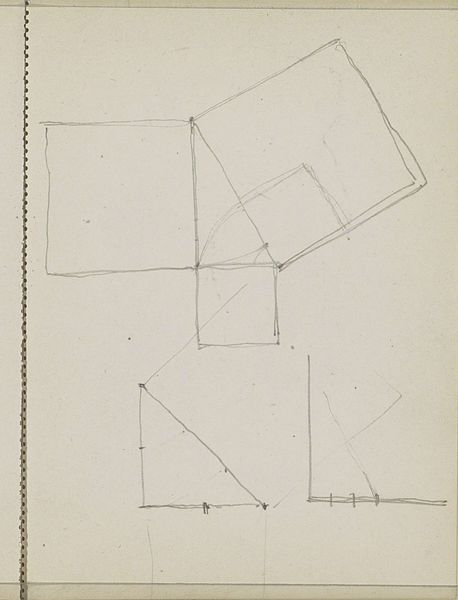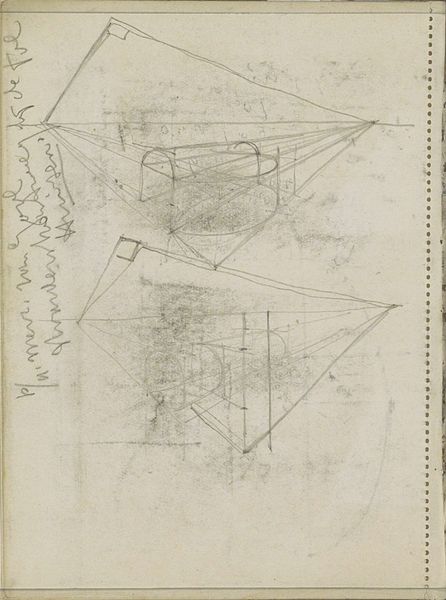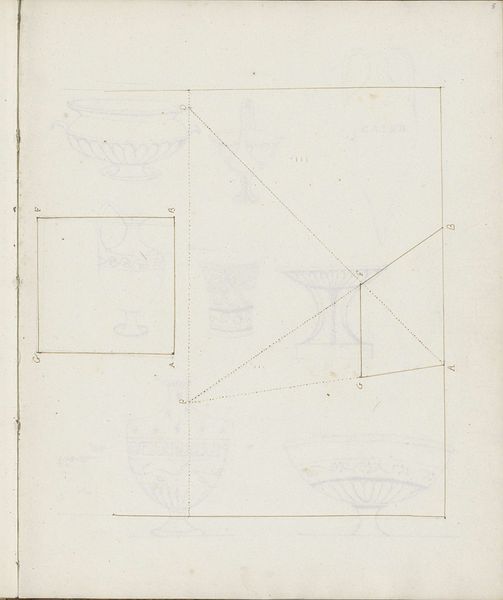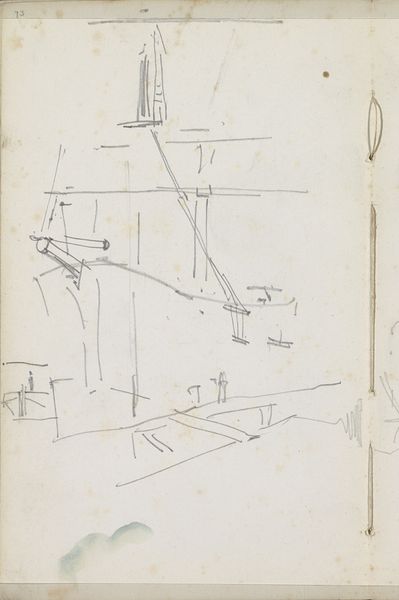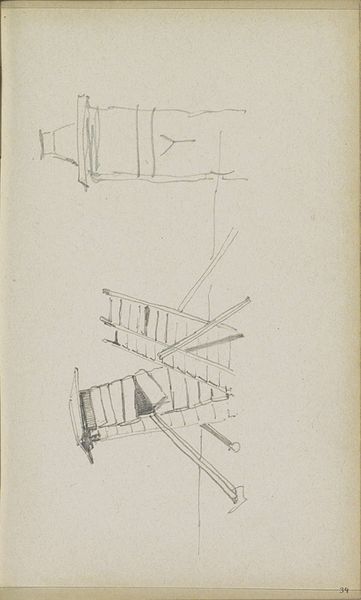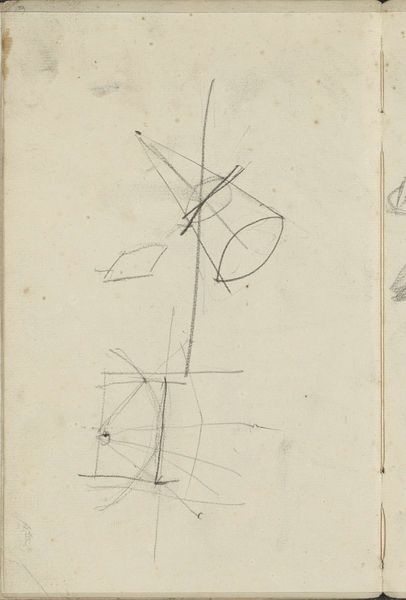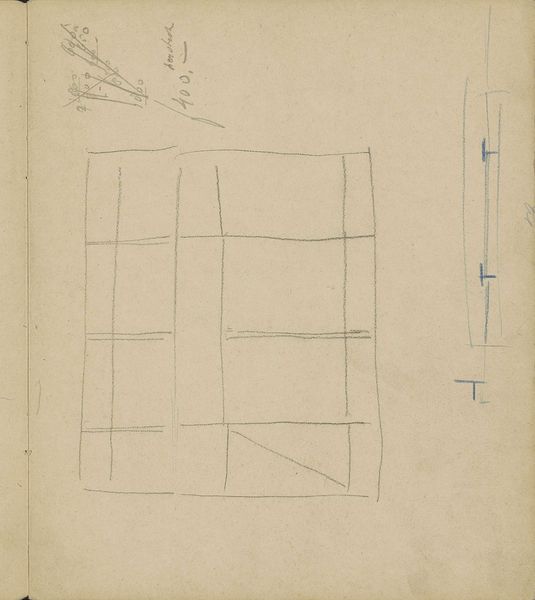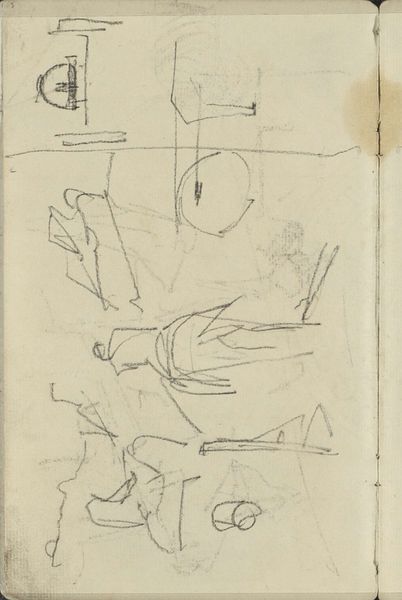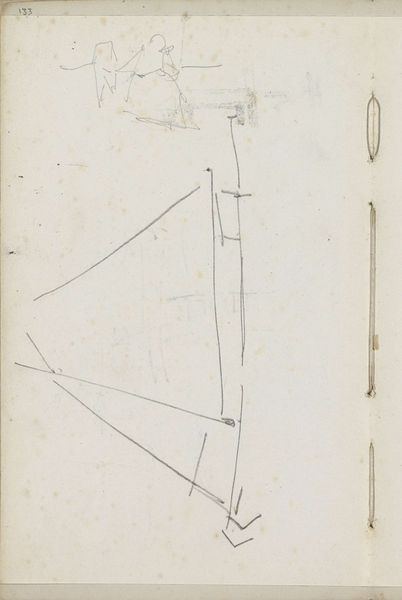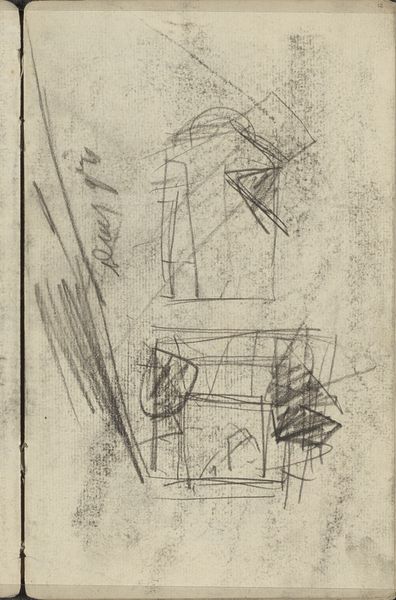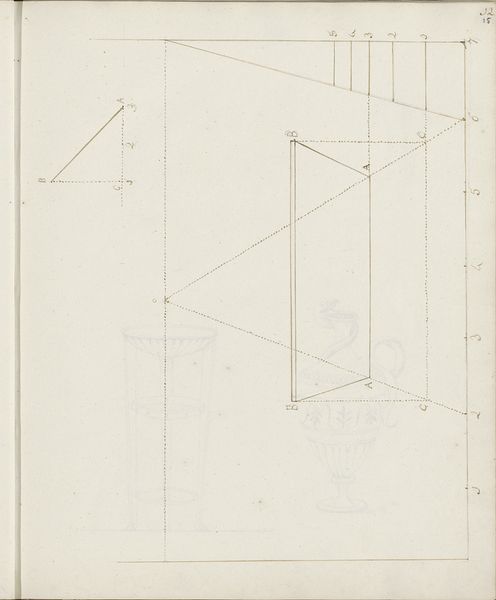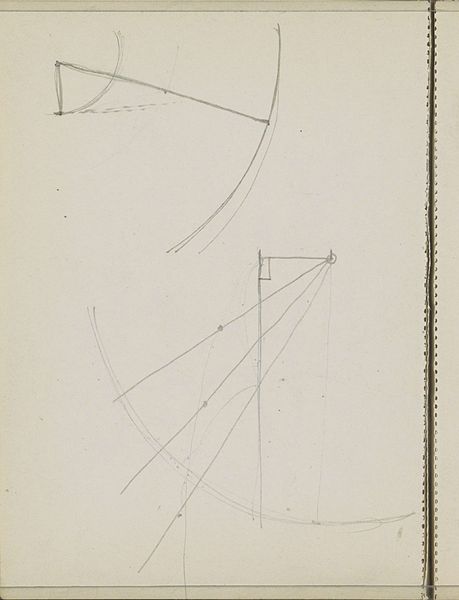
Copyright: Rijks Museum: Open Domain
Curator: Here we have "Studieblad," a sketchbook page by George Hendrik Breitner, dating back to 1907. The medium is pencil on paper, a deceptively simple choice. What strikes you first about it? Editor: An evocative sense of the everyday. It has that rough-and-ready energy of a preparatory sketch, of seeing an artist’s raw thought processes in action. I can almost sense him hunched over this page in a bustling street, capturing what's around him. Curator: Exactly. Breitner was very much a painter of modern urban life. This drawing, with its geometric shapes, seems to represent construction or some kind of framework. The symbolism of that could refer to a rapidly developing society. It’s about building and progress. What kind of buildings, what is in place or planned... all important clues. Editor: I agree. I’m interested in what is included as much as what is excluded. There’s a very minimal quality to it that captures an emotional atmosphere tied to urban change. We only get the skeletal forms, implying a constant state of flux and, dare I say, some instability. Is it really about progress or are there multiple meanings, including displacement? Curator: Well, considering that this sketch exists within a larger sketchbook, and that Breitner, working during the period, was invested in Impressionism… it’s possible we’re glimpsing a fleeting, subjective reality filtered through his artistic lens, which reflects a larger reality. His work can often give the common man more social power. The geometric patterns represent that and that is powerful on its own. Editor: And it’s powerful that it seems to remain so unassuming. The aged paper gives a ghostly quality to it, a relic from a time of huge social transformation. If anything, it’s a reminder of how cities are built, demolished, and rebuilt… endlessly reflecting the human condition. The symbols become about how time changes and impacts everything. Curator: Absolutely, each of those lines and shapes evokes the pulse of that urban development, its triumphs, its anxieties… We see what exists for Breitner, in that exact moment in time. It becomes his reality. Editor: It’s a compelling piece to consider, particularly when you bring up its socio-historical context. All those lines hold immense narratives and social considerations!
Comments
No comments
Be the first to comment and join the conversation on the ultimate creative platform.
